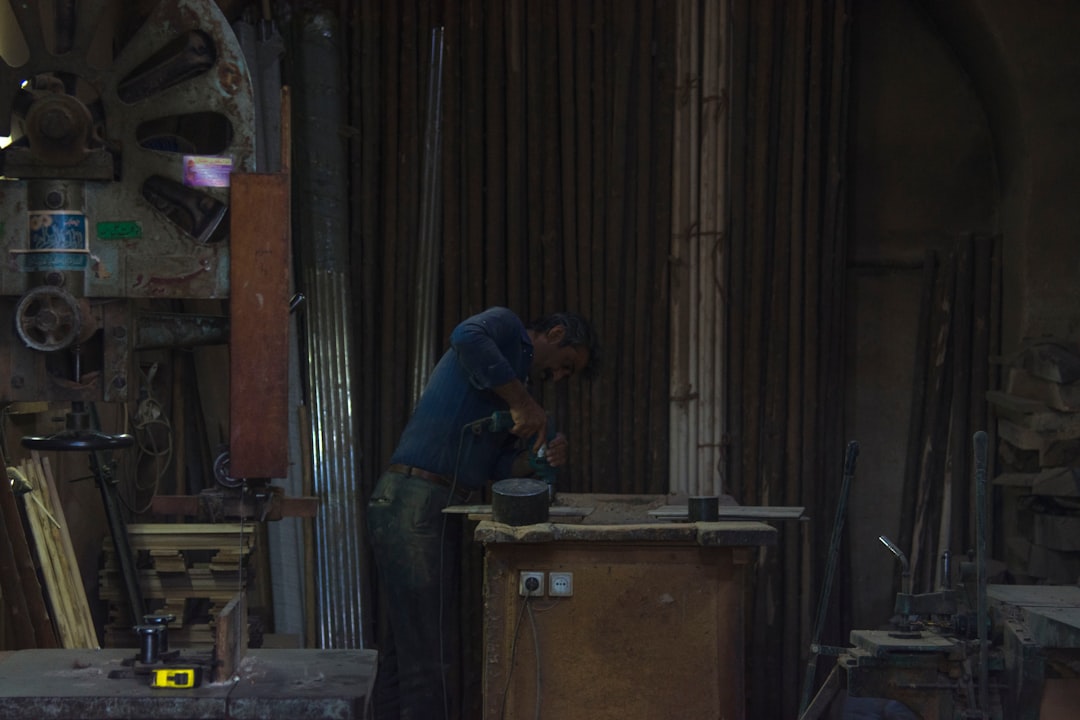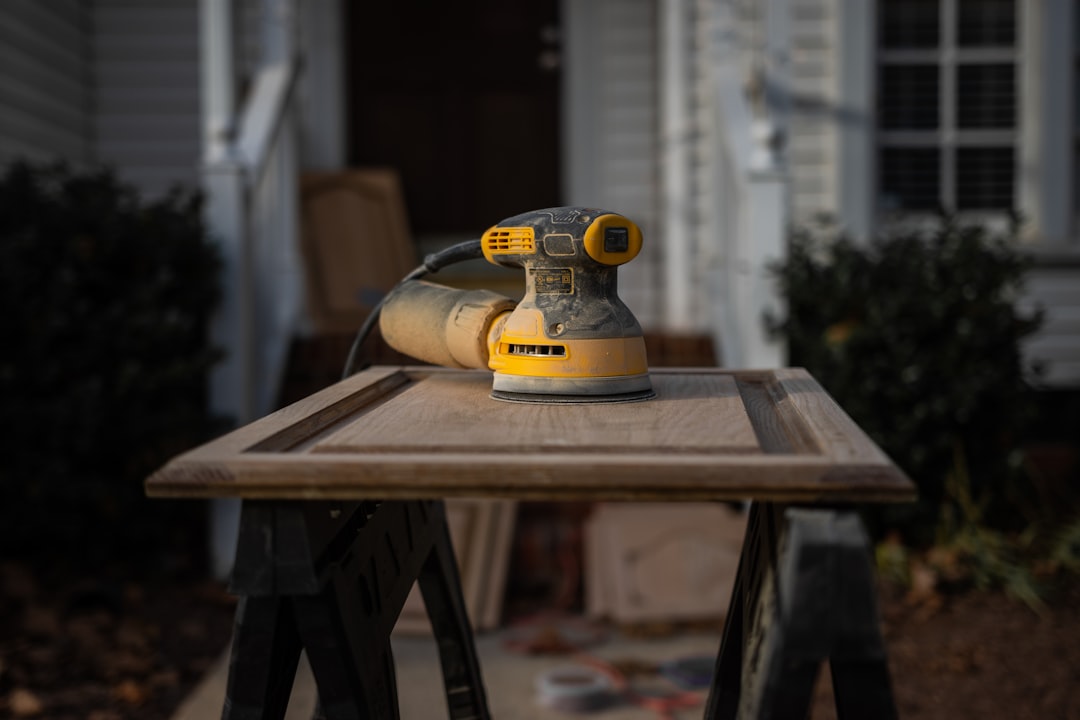

Engage prospects with a scan and streamline customer engagement with FREE QR code marketing tools by Sona – no strings attached!
Create a Free QR CodeFree consultation

No commitment

Engage prospects with a scan and streamline customer engagement with FREE QR code marketing tools by Sona – no strings attached!
Create a Free QR CodeFree consultation

No commitment
In today's digitally driven world, QR codes have transformed from a novelty into a strategic powerhouse, connecting offline engagement with online action. For carpentry services, QR codes offer an innovative and seamless way to provide customers with essential details about woodworking services, custom carpentry options, and repair solutions without requiring an app download or technical expertise.
As the carpentry sector becomes more competitive and customer expectations rise, blending traditional craftsmanship with modern marketing technology sets businesses apart. By adding QR codes to invoices, brochures, estimates, and jobsite signage, carpentry professionals can instantly share project galleries, testimonials, pricing models, and contact information. This bridge prevents information loss, a common reason for missed high-value prospects, and it builds confidence at every touchpoint.
This guide demonstrates how QR codes can be tactically used to educate and engage clients, generate more high-quality leads, and highlight your carpentry business's unique value. Learn strategies for capturing prospects, improving communication, and using QR-enabled workflows to deliver an outstanding customer experience.

QR codes bridge the gap between physical touchpoints and digital outcomes, helping carpenters recover valuable leads that are often lost in analog processes. The moment someone sees your work on a yard sign, flips through your brochure, or holds your estimate, a scan can give them instant clarity on services, timelines, care instructions, and pricing approaches.
Replacing outdated materials like static brochures and paper estimates with dynamic tools ensures your information stays fresh and accessible. Instead of relying on customers to type URLs or keep stacks of paperwork, a QR code delivers exactly what they need on their phone. This can include a video walkthrough of your process, a cabinet finish selector, a quote request form, or a live chat option for quick questions.
Modern QR platforms automate lead capture and sync scan data to CRM or marketing tools. For example, a code on an estimate can trigger automated follow-ups, assign a salesperson, and send a reminder email 24 hours later, ensuring you respond before competitors. This automation does more than reduce manual work; it standardizes your process so every customer receives timely, consistent attention.
Adopting QR codes for customer education is not only a marketing upgrade, it is also a service experience upgrade. Your clients will feel guided and informed at each stage, which accelerates decisions and reduces friction for everyone involved.

Carpentry businesses often lose opportunities between initial customer interest and actual engagement. Conventional advertising methods like flyers or banners generate anonymous traffic, which makes it difficult to identify and prioritize interested prospects. Even when people intend to revisit your website later, they can forget the URL or misplace the handout.
With QR codes, every interested individual can instantly access digital channels, view service menus, request quotes, or explore designs. This convenience reduces drop-off and gives your business a direct line to track and follow up. Dynamic QR codes add another advantage: you can update the destination content after printing, which means your mailers, jobsite signs, and brochures never go out of date.
Analytics give carpenters insight into campaign performance, channel effectiveness, and sales velocity. By knowing which scan sources produce the most quotes and which scan times correlate with higher close rates, you can refine placements and offers in a measurable way. The result is better follow-up, higher conversion rates, and smarter allocation of your marketing budget.
Choosing the right QR code format ensures your scan-to-action flow fits the context. Carpentry prospects want immediate clarity, easy communication, and the option to dive deeper into your work, so select formats that remove friction and showcase value.
Use dynamic QR codes for most customer-facing materials. They are trackable, editable, and compatible with A/B testing. Static QR codes have a place for fixed assets, like a permanent safety guide or Wi-Fi access in a showroom, but dynamic codes unlock long-term flexibility.
With centralized tools like Sona QR, you can manage multiple formats in one place, standardize branding, and enforce naming conventions. You can also apply UTM parameters to each destination to attribute results across channels.

Reaching the right prospects at the right time is a common challenge. The best opportunities arise where your physical presence intersects with customer curiosity. Use QR codes where people already pause, evaluate, or wait. Make the action meaningful: view a project similar to what you see or book a consultation in two minutes.
This approach maximizes attention capture and attribution. Each scan reveals more about what people want and where they encountered your brand. By testing placements and calls to action across these opportunities, you can steadily increase scan volume and the percentage of scans that lead to quotes.

QR-enabled workflows help eliminate missed follow-ups and late engagement by making next steps obvious, fast, and trackable. The right use cases also deepen customer education, which reduces uncertainty and increases trust. Focus first on the interactions that repeatedly affect your pipeline and customer satisfaction.
By integrating QR codes at these key moments, carpentry businesses convert anonymous interest into measurable leads and convert completed jobs into social proof. That combination increases conversions and accelerates your pipeline.
Each QR code scan is a signal that includes intent, context, and timing. When you deploy unique codes across your materials, you can segment your audience automatically and tailor follow-up based on their behavior. Instead of treating every inquiry the same, you can let the scan tell you whether someone is exploring inspiration, requesting pricing, or seeking urgent repairs.
For carpentry, distinct audiences often include DIY learners, homeowners planning upgrades, property managers maintaining units, designers looking for trade partners, and real estate agents needing quick-turn repairs. Segmenting by scan source helps too. For example, a scan from a yard sign near a remodel indicates neighborhood interest, while a scan from an invoice points to an existing client with upsell potential.
With Sona QR, each code becomes a smart entry point into your funnel. You can see which audiences are growing, which are ready for a sales touch, and which benefit from education before a quote. This level of targeting improves conversion rate without increasing ad spend.
Disconnected campaigns lead to confusion, slow follow-ups, and wasted budget. Integrating QR codes across every channel unifies messaging and converts offline touchpoints into measurable digital journeys. You gain both engagement and intelligence, which lets you respond faster and improve over time.
Think of each channel as a chapter in the same story. A mailer introduces your capabilities, a yard sign shows real results, a brochure explains options, and an estimate invites a decision. QR codes connect those chapters and track how many readers move to the next page.
QR codes serve as the offline onramp to your digital marketing engine and unlock a new layer of data across channels that were once difficult to measure. With a centralized platform like Sona QR, you can manage codes, monitor performance, and sync scan data with your CRM and ad platforms for closed-loop reporting.
Well-executed QR campaigns start with clear goals and end with measurable outcomes. Use the following framework to plan and launch with confidence. Adapt each step to the carpentry scenarios you run most frequently, such as kitchen remodels, custom built-ins, or emergency repairs.
Define the business outcome you want. Do you need more quote requests, richer project details, or more reviews right after completion? Clarify the audience and the context of the scan so your call to action fits the moment.
For example, at a home show, your priority could be consultation bookings. On a yard sign outside a remodel, your goal might be to collect referrals from nearby homeowners. On an invoice, your objective could be to drive a review and an upsell to a maintenance plan.
Static QR codes are fine for fixed destinations such as a brochure PDF or a long-lived safety guide. Dynamic QR codes are ideal for trackable, editable links, campaign optimization, and audience retargeting. They are also essential if you want to run A/B tests or change destinations seasonally.
If you want data, flexibility, and integration, choose dynamic. With Sona QR, you can manage both types in one place, enforce naming standards, and add UTMs for better attribution.
Design the code to match your brand. Include your logo, colors, and a clear frame that reads Scan to view our work from three feet away. Size matters. On vehicle wraps, aim for larger codes and short CTAs. On estimates, a 1 to 1.5 inch code can work well.
Test scans on multiple devices, angles, and lighting conditions. Print a proof and try it with iOS and Android phones from different distances. Ensure the destination page is mobile friendly, loads quickly, and maps directly to the promise in the CTA. Confusion at this stage kills momentum.
Prioritize placements based on traffic volume and buyer intent. Use brochures in showrooms and at home shows, yard signs on active jobs, direct mail in target neighborhoods, and business cards with vCards at consultations. Add QR stickers to installed items for care guides and warranties.
Match placement to scanning context. For speed-sensitive interactions like emergency repairs, use SMS or phone-triggering codes. For research phases like design inspiration, drive to galleries and finish selectors. Make sure the physical environment supports scanning with adequate light and line-of-sight.
Use a platform like Sona QR to monitor scans by time, location, and device. Connect to your CRM to attribute scans to contacts and deals. Measure conversion behavior such as form submissions and calls, and watch for drop-off points that signal friction.
Run A/B tests on landing pages, calls to action, and even code design frames. Iterate monthly. Retire underperforming placements and double down on top performers. The goal is to align QR scans with revenue, not vanity metrics.
A disciplined approach turns QR codes into a repeatable growth engine. Your team will know which surfaces and messages drive interest, and your sales process will meet that interest fast.
The real value in QR campaigns comes from tracking the end-to-end customer journey. Knowing that a scan occurred is the starting point, not the finish line. You need to understand how the engagement influenced the path to conversion: Did the scanner submit a form, schedule a call, or open a proposal? Did the scan sequence correlate with a sale or an upsell?
For carpentry teams, connecting QR activity to pipeline impact gives you clarity on which placements and messages pay off. Traditional tools stop at the scan, which leaves you guessing. With Sona QR and Sona.com analytics, you can capture the full picture, from first interaction to closed deal.
The result is a performance marketing system that does not guess. It measures. You can invest confidently in the materials and messages that drive ROI, lower customer acquisition costs, and improve the customer experience in the process.
Scaling QR campaigns requires both discipline and creativity. As you expand, your biggest gains will come from consistent tagging, automation, and training your team to promote scanning with clear benefits.
Creative deployment examples can compound results. Place a QR sticker inside installed cabinets that opens a care guide and a reorder form for matching hardware. Add a code to invoices that links to a one-minute review flow plus a maintenance plan offer, which increases lifetime value. Start creating QR codes for free with Sona QR, then expand as you prove what works.

Practical success stories show how small QR changes drive big outcomes. When you embed QR codes into everyday materials, you make it easier for interested people to act, and you gain the data to keep improving.
Encouraging customers to share photos or testimonials through QR forms builds trust and extends your reach. These user-generated elements amplify the authenticity of your brand and accelerate word-of-mouth in local communities.
Mastering QR in carpentry is about more than printing codes. It is about delivering the right content at the right moment, removing friction, and measuring results so you can optimize with confidence. Use the tips below to refine your approach and avoid common mistakes.
Common pitfalls include sending scanners to a generic homepage, hiding codes in cluttered designs, and failing to connect QR activity to a CRM. Another pitfall is using the same code across multiple assets without proper tagging, which makes it hard to identify what worked. Finally, forgetting to test in real lighting and distance conditions can sink a campaign before it starts. A short test in context saves time and money.
For modern carpentry businesses, QR codes are essential for combining traditional expertise with today’s customer expectations. Each offline touchpoint, from quotes to yard signs, becomes a measurable marketing opportunity. When you layer analytics and CRM integration on top, you keep prospects visible, enable timely outreach, and unify your messaging for competitive, measurable growth.
By making QR codes central to your carpentry marketing strategy, you can capture more demand from every contact, regardless of where it begins. Whether your challenges involve lead tracking, consistent messaging, or timely follow-up, QR-powered campaigns offer the flexibility and insight you need to overcome them. The payoff is a more engaged and well-educated customer base, higher operational efficiency, and real growth.
If you are ready to start, generate a few dynamic codes for your highest-traffic materials and connect them to specific outcomes such as quote requests or reviews. With Sona QR, you can set up, track, and optimize in minutes. As scans turn into conversations and conversations turn into projects, you will see why QR codes are more than a shortcut. They are a strategy that turns curiosity into revenue.
QR codes have revolutionized carpentry services by turning traditional customer education into an interactive, measurable experience. Whether it’s showcasing detailed project portfolios, sharing instructional videos, or providing instant access to material specs, QR codes empower carpenters to engage clients more effectively and build trust through transparency. Imagine clients scanning a code on your finished worksite and immediately gaining insights that inspire confidence and drive referrals.
With Sona QR, you can easily create dynamic, trackable QR codes that update instantly without the need for reprinting, ensuring your educational content stays fresh and relevant. Every scan becomes a valuable data point, helping you understand which information resonates most and how to optimize your customer outreach. Start for free with Sona QR today and transform every interaction into a lasting relationship and new opportunity.
Carpentry businesses can use QR codes on invoices, brochures, and jobsite signage to instantly share project galleries, testimonials, pricing, and contact information, providing customers with seamless access to essential service details and enhancing communication.
Best practices include using dynamic QR codes for flexibility and tracking, designing codes with clear calls to action, placing them where scanning is natural, testing codes on multiple devices, and integrating them with CRM systems for automated follow-ups and performance monitoring.
QR codes enable instant access to quote request forms, project details, and contact options, reducing lost leads by making it easy for prospects to engage immediately and allowing businesses to automate lead capture and assign follow-ups through CRM integration.
QR codes should link to dynamic content such as project galleries, service menus, quote request forms, customer reviews, care and maintenance guides, contact vCards, and appointment booking tools to provide relevant and actionable information to customers.
QR codes can be placed on permanent safety guides, jobsite signage, and installed components to deliver safety instructions, warranty information, care guides, and emergency repair forms, ensuring workers and clients have easy digital access to important information.
Use Sona QR's trackable codes to improve customer acquisition and engagement today.
Create Your FREE Trackable QR Code in SecondsJoin results-focused teams combining Sona Platform automation with advanced Google Ads strategies to scale lead generation

Connect your existing CRM

Free Account Enrichment

No setup fees
No commitment required

Free consultation

Get a custom Google Ads roadmap for your business






Launch campaigns that generate qualified leads in 30 days or less.
